by Cate Cleo Alexander, University of Toronto
It’s the hot new trend in the historic photo colourization community: AI generated movement.
Recently, content creators on platforms like YouTube have started to “bring history to life” by using AI programs to colourize, “modernize,” and animate portraits of historical figures. However, this technology often alters historical portraits to reinforce modern gender normativity and fetishization of whiteness — devaluing diversity and accuracy in digitally mediated public history in favour of a simulated intimacy with “attractive” bodies. I have documented this trend through my survey of four content creation teams: Royalty Now, Randomly Digest, Historicly, and Mystery Scoop.
“Colourization”
In the first stage of a “brought to life” style video, the image is colourized and/or enhanced. Content creators often automate this work with AI programs like Gradient. The labelling of these images as simply “colourized” or “enhanced” obscures the true amount of modification.
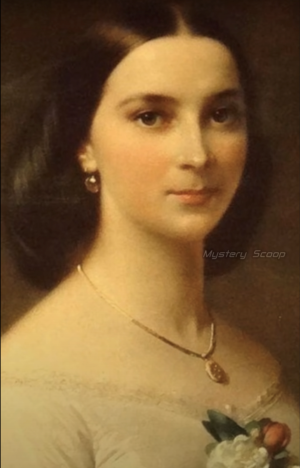
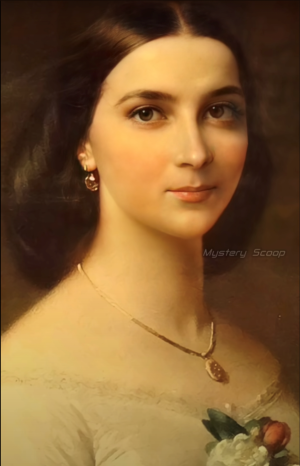
Screenshots of an AI “enhanced portrait” from Mystery Scoop video “Historical Figures Brought To Life (King Henry VIII, Catherine Howard, Queen Mary I, Verdi, Tesla)”
The screenshots above show the before and after of an AI-enhanced portrait of a “Southern Belle” from a Mystery Scoop video. The subtle differences are made more noticeable through the animated GIF below.
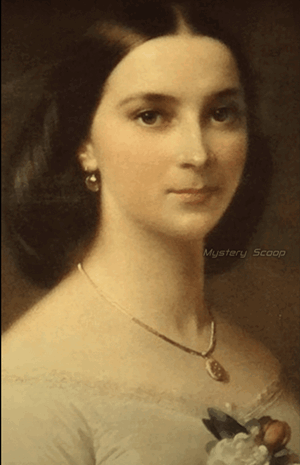 GIF created by Cate Cleo Alexander
GIF created by Cate Cleo Alexander
Note how the eyes shift upwards, the hairline changes, the shadow under the chin deepens, the cheekbones sharpen, and the highlights and shadows of the face increase in contrast. This is not so much digital restoration as a digital facelift.
Sometimes the changes are less subtle. Historicly, Mystery Scoop, and Randomly Digest all use AI to add makeup to female-presenting subjects. These makeovers range from subtle eyelash extensions and lipstick to a dramatic smoky eye. Often, the content creators who post these images seem unaware or uncaring of the physical limitations of makeup: noses and faces are slimmed, cheekbones change location, eyes are enlarged, and — most problematically — skin is whitened.
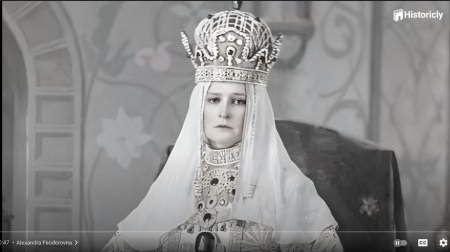
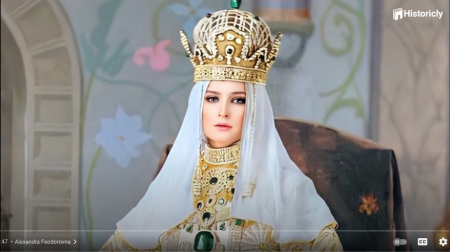
Screenshots of an AI “colourized” Alexandra Feodorovna from Historicly’s video “Romanov Family – 10 Striking Photos From Romanov’s Last Ball – Brought to Life”
“Modernization”
One of the most insidious implications of this content is that in order to be “modern” and “relatable,” historical figures must be proximate to Western ideals of beauty. One prominent example of this comes from videos featuring the portrait of a once-known woman who is referred to as “Mestiza de Sangley,” an antiquated term for someone of Chinese and Filipino descent. In their video, Randomly Digest posits: “What if she lived today? Loose interpretations with modern make up and hairstyle.” The AI generated image is barely recognizable. The woman’s face shape, cheekbones, lips, hairline, and body positioning are all shifted, bringing her in closer proximity to gender normative and white supremacist ideals of beauty.
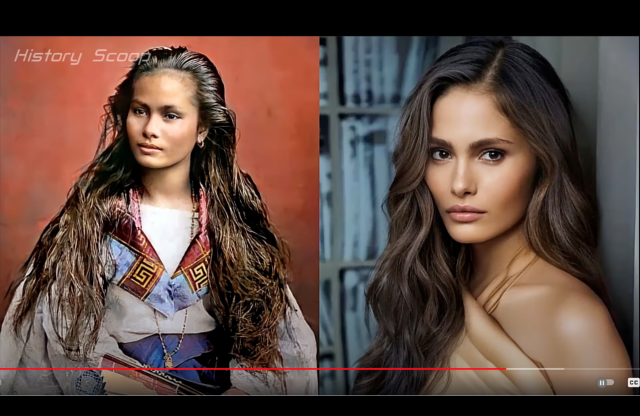 Screenshot of an AI-generated “modernized” woman from Randomly Digest’s video “Mestiza de Sangley, 1875, Brought To Life”
Screenshot of an AI-generated “modernized” woman from Randomly Digest’s video “Mestiza de Sangley, 1875, Brought To Life”
Animation
After “colourization” and “modernization,” the final stage of a “brought to life” video is animated movement. Through AI tools like Deep Nostalgia, these uncanny personages tilt their heads, look around, blink, and smile.
Unlike the other channels, RoyaltyNow manually creates portraits and conducts research to make their recreations as accurate as possible. In the example below, RoyaltyNow recreated Mary Queen of Scots through studying her death mask, other portraits, and contemporary descriptions. However, after all that meticulous work, the image was fed into AI animation software — thus distorting the image.
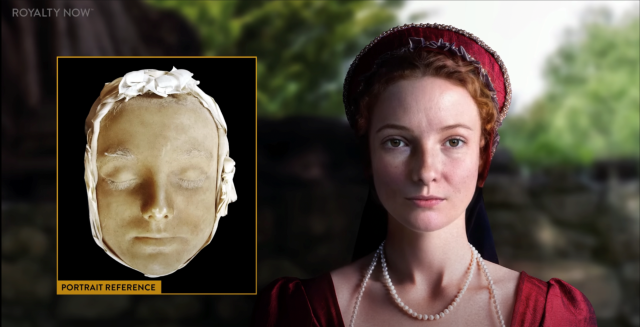 Screenshot from RoyaltyNow video showing their original recreation of Mary, Queen of Scots
Screenshot from RoyaltyNow video showing their original recreation of Mary, Queen of Scots
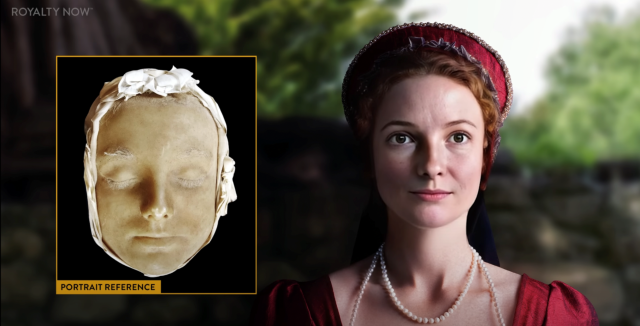
Screenshot from RoyaltyNow video showing how the recreation has been distorted after being fed into the AI animation program
These AIs homogenise, flatten, and contrast features based on the racialized and gendered norms established by their training data. Yet, because the YouTube algorithm rewards posting frequently,[1] content creators are pressured to speed up their workflows with AI automation in order to remain algorithmically visible. Staying on trend is also key to maintaining an audience, which likely influenced RoyaltyNow’s decision to use AI animation. After all, it’s clear that audiences react to this content.
YouTube and Public History
At the time of this writing, the four channels that I reviewed have a combined total of 186,939,185 views.[2] The comment sections are filled with emotional reactions — viewers report tearing up, feeling “moved” or “emotional,” and having chills or goosebumps. As one comment stated, “Who else got chills and a tear in their eye when the Grand Duchess Romanova ‘came to life’? Honestly, when she began to smile and move her eyes around I just got so emotional.”
In her book on queer archives, Ann Cvekovitch describes “the quest for history as a psychic need.” More and more, people are turning to the Internet to fulfil their thirst for learning about the past. There is a desire to create affective intimacy with these historical figures. However, these AI algorithms are creating this intimacy by contorting and distorting these images, creating the false impression that gender expression is immutable and positioning “modernity” and “relatability” alongside whiteness. Given the substantial impact of this content, this uncanny new practice in digital public history must be investigated further.
Endnotes
[1] Probably; it’s tricky to figure out how YouTube’s algorithms work. However, because there’s a lot of algorithmic gossip that frequency is rewarded (see examples 1, 2, and 3), many creators will strive for frequent uploads.
[2] Historicly – 12,260,968 total views; RoyaltyNow – 42,618,816 total views; Mystery Scoop – 130,354,670 total views; Randomly Digest – 1,704,731 total views. Numbers obtained from About section on YouTube Channels, August 27, 2024.
